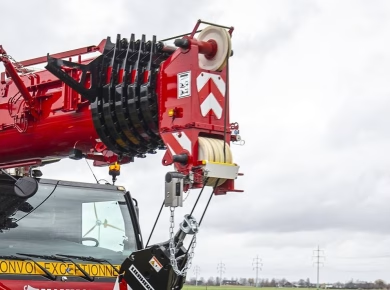Every year, countless individuals are affected by backover accidents on job sites, often resulting in life-altering injuries or fatalities. These incidents occur in the blink of an eye, typically when a vehicle or piece of heavy machinery is in reverse, and a worker, often unseen by the operator, is caught in the path. The reality is stark: these accidents are not just tragic; they are preventable. Understanding the common causes and implementing proactive measures can drastically reduce the incidence of backover accidents, safeguarding lives and enhancing overall workplace safety.
Understanding the Scope of Backover Accidents
Backover accidents can happen in various settings, from construction sites to warehouses and parking lots. According to the National Institute for Occupational Safety and Health (NIOSH), nearly 200 workers are killed each year in backover incidents, and thousands more suffer injuries. These statistics highlight a critical area of concern for safety professionals. The majority of these accidents involve light vehicles, such as pickups or vans, which can easily obscure a worker or a small object in their path.
Common Causes of Backover Accidents
A combination of factors contributes to backover accidents, making it vital to recognize them to prevent future occurrences. Operator visibility is a primary concern. Heavy equipment and vehicles often have significant blind spots, which can obscure the view of workers on foot or other obstacles. Additionally, distractions—whether from noise, phone usage, or other personnel—can lead to momentary lapses in attention for operators.
Another contributor is inadequate training or a lack of awareness among ground personnel about vehicle operations. Workers sometimes underestimate the risks associated with moving machinery, leading to unsafe behaviors such as walking behind vehicles without checking for movement.
Implementing Effective Safety Protocols
Creating a culture of safety starts with comprehensive training and established protocols. Regular training sessions should include hazard recognition, safe vehicle operation, and the importance of using spotters. A spotter can help guide operators when visibility is limited, significantly reducing the risk of accidents.
Consider implementing a “no-go zone” around vehicles and heavy machinery. This practice involves designating specific areas where workers are not allowed to enter while vehicles are in motion. Clearly marked zones and adequate signage can assist in communicating these boundaries effectively.
Utilizing Technology for Enhanced Safety
Advancements in technology offer innovative solutions to mitigate backover accidents. For instance, rearview cameras and proximity sensors can provide operators with better visibility and awareness when reversing. Some sites have adopted technology that alerts drivers when someone or something is in their path. These tools are invaluable in preventing accidents and should be considered essential safety equipment in any fleet.
Beyond technology, employing site-specific safety audits can identify areas where backover risks are highest. Regular inspections allow for continuous improvement and adaptation of safety measures to address new challenges as they arise.
The Role of Communication in Preventing Accidents
Effective communication is paramount in any workplace, especially regarding safety protocols. Daily briefings can serve as a platform to remind workers of the inherent risks associated with vehicle movements and the importance of maintaining situational awareness. Encourage an open dialogue where workers feel comfortable voicing concerns or suggesting improvements to safety practices.
Additionally, using visual aids such as maps of the site can help workers understand vehicle flow and pedestrian pathways better. When everyone is on the same page regarding site layout and designated walking paths, the likelihood of accidents decreases significantly.
Promoting a Safety-First Culture
Cultivating a culture that prioritizes safety over productivity can be challenging but is essential in preventing backover accidents. Leadership must demonstrate a commitment to safety by actively participating in safety discussions and practices, empowering workers to take ownership of their safety and that of their colleagues.
Recognizing and rewarding safe behaviors can also reinforce this culture. Simple acknowledgments or more formal rewards can go a long way in motivating workers to adhere to safety protocols and encourage others to do the same.
Conclusion: A Call to Action for Safety Professionals
Backover accidents remain a critical concern within the construction and health and safety industries, yet they are largely preventable through proactive measures and a commitment to safety. By understanding the common causes of these accidents, implementing effective safety protocols, leveraging technology, fostering open communication, and promoting a safety-first culture, we can significantly reduce the risk of these tragic incidents.
As safety professionals, it’s our responsibility to lead by example and ensure that every worker returns home safely at the end of the day. Let’s use our experiences and insights to advocate for best practices, ensuring that backover accidents become a thing of the past. Together, we can create safer job sites and protect the lives of those who work on them.


